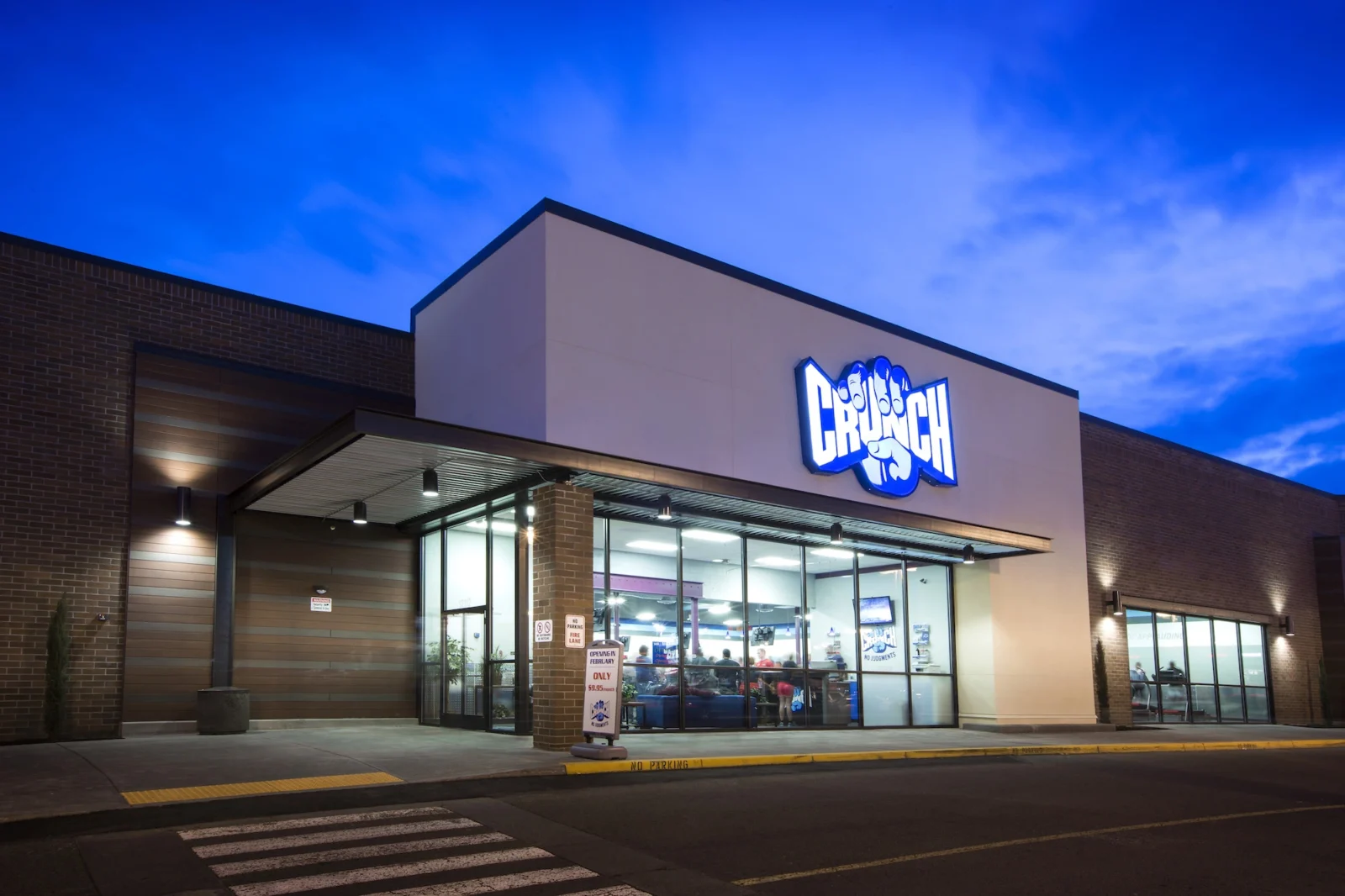As HVLPs Enter Golden Era, Mid-Tier Gyms Could Feel Squeeze

The rise of low-price gym brands like Crunch Fitness might spell bad news for mid-tier chains and independent operators
High-value, low-price (HVLP) gym chains are poised for continued growth, fueling a wave of consolidation that could see mid-tier gyms and smaller mom-and-pop operators get swallowed up, analysts predict.
According to a new “State of the Fitness Market” report from investment bank Lincoln International and L.E.K. Consulting, HVLP gyms and luxury clubs are outperforming the market, while mid-tier brands are falling behind.
Since the pandemic, the gym market has become increasingly bifurcated, analysts say, with many consumers either gravitating to budget-friendly HVLP gyms, whose memberships typically run between $15 to $30/month, or high-end clubs that generally cost $200/month or more.
Mid-tier gyms, typically priced between $40 to $70/month, are struggling to stay competitive, especially as HVLPs now offer many of the same amenities, including saunas, group fitness and in some cases, even pools and basketball courts.
“COVID really accelerated what we call the ‘barbell effect,’ where the mid-tiers dropped out and the consumer either went down to HVLPs, which now offer more amenities for about the same price when you factor in inflation, or consumers who want nicer, better amenities go to the Life Times, Equinoxes and Bay Clubs of the world,” Kyle Perreira, a director at Lincoln International who leads the firm’s fitness sector, tells Athletech News.
For Low-Price Gyms, Business Is Booming
Investors and analysts are generally bullish on the future of the HVLP gym sector, pointing to the relatively recession-proof nature of low-price gyms coupled with Americans’ rising interest in fitness and wellness.
“It’s a very limited risk because that consumer is always going to be there,” Perreira says. “It’s almost like asking, ‘Do you think Walmart’s ever going to go out of business? There’s always going to be a consumer for Walmart, just like there’s always going to be a consumer for HVLPs.”
The rise of so-called “HVLP 2.0” gyms is pushing the sector even further forward. Brands like Crunch Fitness, EoS Fitness, Chuze Fitness and Vasa Fitness, among others, offer everything from premium strength training equipment and large turf spaces to services like infrared sauna, red light therapy, and massage guns and chairs.
Planet Fitness, a pioneer of the original, no-frills HVLP 1.0 model, has begun upgrading many of its locations to compete with these 2.0 players.
“For $15 to $30, you can have a Lifetime or Equinox-level experience in the gym,” says Jeremy Hirsch, head of franchise and multi-unit services at investment bank Houlihan Lokey. “That perception of value is a major driver.”
“At these price levels, HVLP 2.0 is considered recession resistant,” Hirsch adds. “Consumers are not likely to cancel and will cut back on other spending instead.”

Unsurprisingly, private equity firms are betting big on the future of HVLPs. Earlier this month, Leonard Green & Partners acquired a majority stake in Crunch. Last week, Reuters reported that EoS is seeking a buyer in a deal worth at least $1 billion. More deals may be on the horizon.
“2025 is poised to be the biggest year of activity ever in the fitness category,” Hirsch told ATN back in March, noting that much of that activity will happen in the HVLP sector.

Mid-Tier Gyms, Mom-and-Pops Face Pressure
Amid the rise of HVLPs, middle-market brands, including giants like 24 Hour Fitness, LA Fitness and Gold’s Gym, may find it hard to justify their prices to consumers.
“It’s a tough place to be,” Hirsch says. “If (both segments) are offering similar services, then the question becomes: Why am I paying more money for an equal or subpar experience?”
Crunch’s largest franchisee, CR Fitness, recently acquired nine 24 Hour Fitness gyms in Florida, following an earlier deal for two New York Sports Club locations. The acquisitions could signal a broader consolidation trend, with HVLP operators scooping up struggling mid-tier competitors.
“I expect to see continued consolidation happening in the space with portfolio trimming occurring within the middle market,” Hirsch says.
Perreira agrees, noting that while well-known mid-tier gym brands will remain fixtures in America’s fitness landscape, they’ll likely downsize to focus on their strongest markets.
“You’re going to see that middle-tier diminish in terms of number of locations,” he says. “There is still consumer demand for this product offering and there are some really great mid-tier gyms in A+ real estate locations… but they’ll double down on their core markets and close loss-making geographies and locations.”
Smaller operators and mom-and-pop-gyms face similar pressures. Crunch franchisee Fitness Holdings North America acquired five Jersey Strong gyms in New Jersey earlier this year, while Planet Fitness scooped up all 11 Texas Family Fitness locations back in December.
“I think the majority of regional brands or mom-and pops will get swallowed up, but there will always be room for (some) mom-and-pops given the hyper-regional nature of gyms,” Perreira predicts.
Small-Box Gyms Carve Out a Niche
While HVLPs figure to dominate urban and large suburban markets in the years to come, small-box gyms may be able to sidestep the industry’s shakeout. Brands like Anytime Fitness and Workout Anytime, to name just a couple, tend to open in smaller communities where big-box gyms don’t make financial sense.
Private equity firms see an opportunity for these operators to own small-town America, which could become an increasingly important segment as more people join gyms. Rainier Partners, a Seattle-based firm, recently invested in one of Anytime Fitness’ largest franchise groups to fuel expansion in smaller markets.
“We’ve found that Anytime can do quite well in smaller markets,” Jonathan Lo, who previously served as Rainier’s vice president, told ATN in November. “To support a Planet Fitness, you need anywhere from 5,000 to 10,000 members to make the math work right to support the rent and build-out costs. Our typical gym has 500 to 1,000 members.”
To view Lincoln and L.E.K.’s State of the Fitness Market: 2025 report in full, click here.



